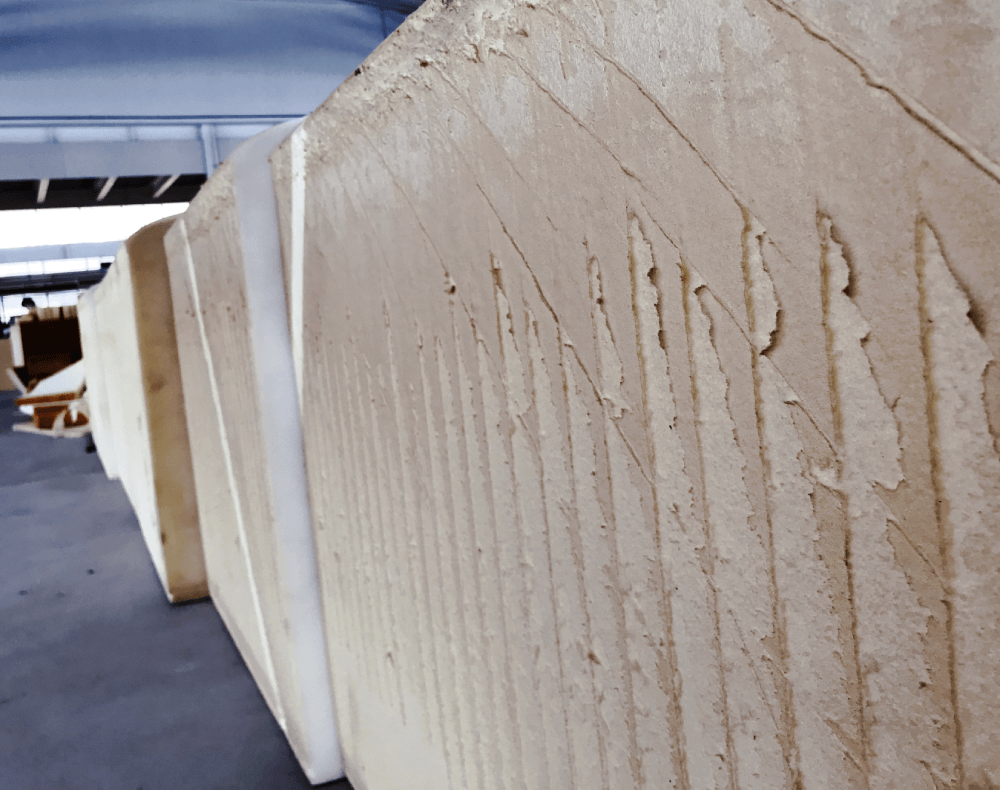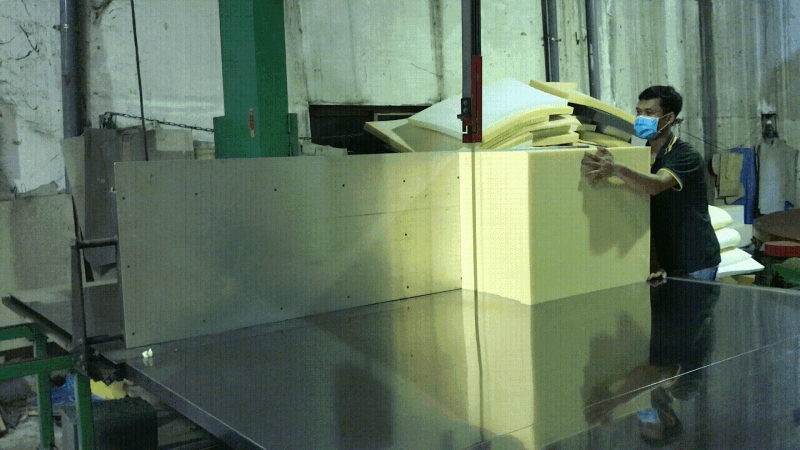Vertical and Horizontal Cutting Machines
Both vertical and horizontal cutting are keystone machines in PU conversion. We cover the benefits of pairing automated horizontal cutting and manual vertical cutting as well as discuss CNC alternatives.
The Foam Cutting Line
What does a classic PU foam cutting line look like? Typically, we begin with a vertical cutting machine for side-trimming. The raw material is a large foam block from either a batch or continuous foaming machine. Because of this, there is skin to be trimmed off like crust from a loaf of bread.

At this point, the block is usually moved to the horizontal cutting machine which trims the top. If this is a mattress production line, the foam block is further sliced into sheets anywhere from centimeters to inches thick. These sheets can then be stacked into the comfort layer of a mattress or quilted into a mattress topper.
If this is a furniture production line, on the other hand, horizontal cutting might be minimal. This is so that smaller blocks at the right height can be brought back to the vertical cutting machine for further cutting.
Why People Choose Manual Vertical Cutting Machines
One key difference between the vertical and horizontal cutting machines even in the same factory is that many plant owners opt for manual vertical cutting machines. This is because vertical cutters offer more manual dexterity.

Automated functions on a horizontal cutting machine are useful because workers don’t have to manually adjust for the height of each sheet. In contrast, vertical cutting machines are often used to trace cutting templates. Foam for furniture-making has to be cut into very specific shapes and dimensions. Typically, plant managers leave that to workers’ capable hands.
Vertical Cutting or CNC Cutting?
An alternative to manual vertical cutting is, of course, CNC cutting. “Computer Numerical Control” by definition does not require manual operation (wiki), and it is the most reliable option for cutting nonlinear and irregular shapes out of large foam blocks.
As you would expect, the trade-off here is the price. Sunkist’s vertical cutting machines are popular in areas with cheaper labor, whereas our CNC cutting machines are purchased more in countries where automation quickly pays for itself. CNC wins out in terms of consistent performance; a vertical blade is liable to have a higher tolerance than a horizontal one, especially given the human dimension (applied pressure in any nonlinear direction can skew the blade). Vertical cutting, however, may prove itself the most practical option in many foam conversion plants.